
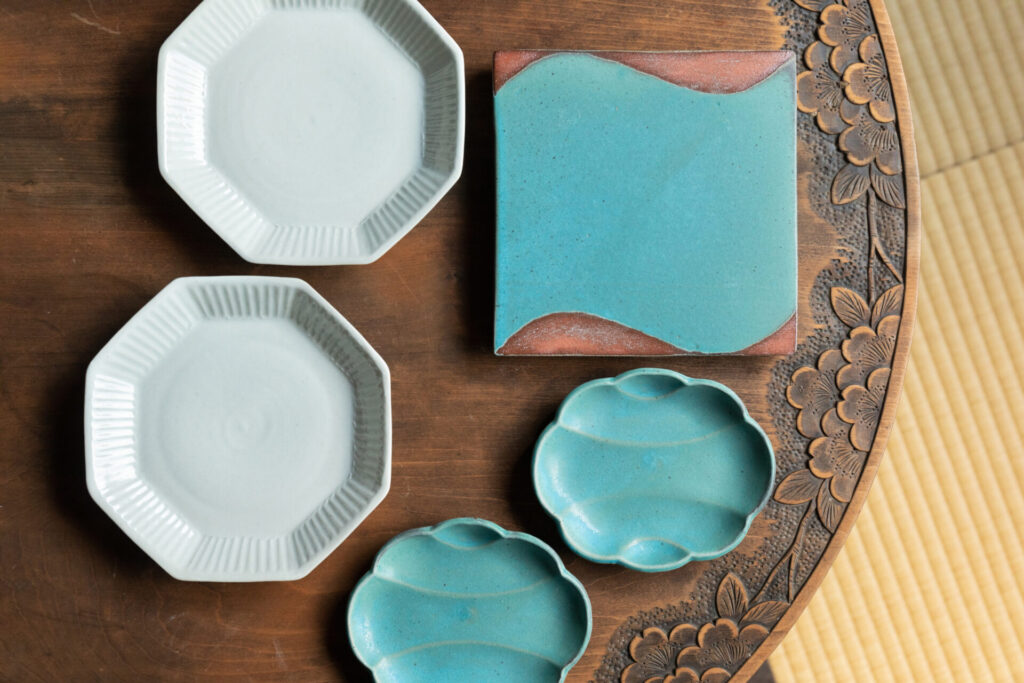

A new series of articles highlighting people making things in Kyoto and introducing their thoughts and works has begun. The first installment features Taro Yamamoto, a potter in the mountain village of Uji. We visited his kiln and asked him about the story behind the creation of his works and his thoughts.
The Turkish blue glaze gives a vivid hue with an atmospheric feel. The Shinogi technique, which is the spirit of folk crafts, is used to create his pottery. Yamamoto Tarou weaves these two elements into his works as synonyms and produces his own unique vessels. Yamamoto's studio is located in the quiet village of Sumiyama, a mountain road leading up from the center of Uji. Sumiyama is a craft village where potters of Kyoto and Kiyomizu ware moved to about 50 years ago.
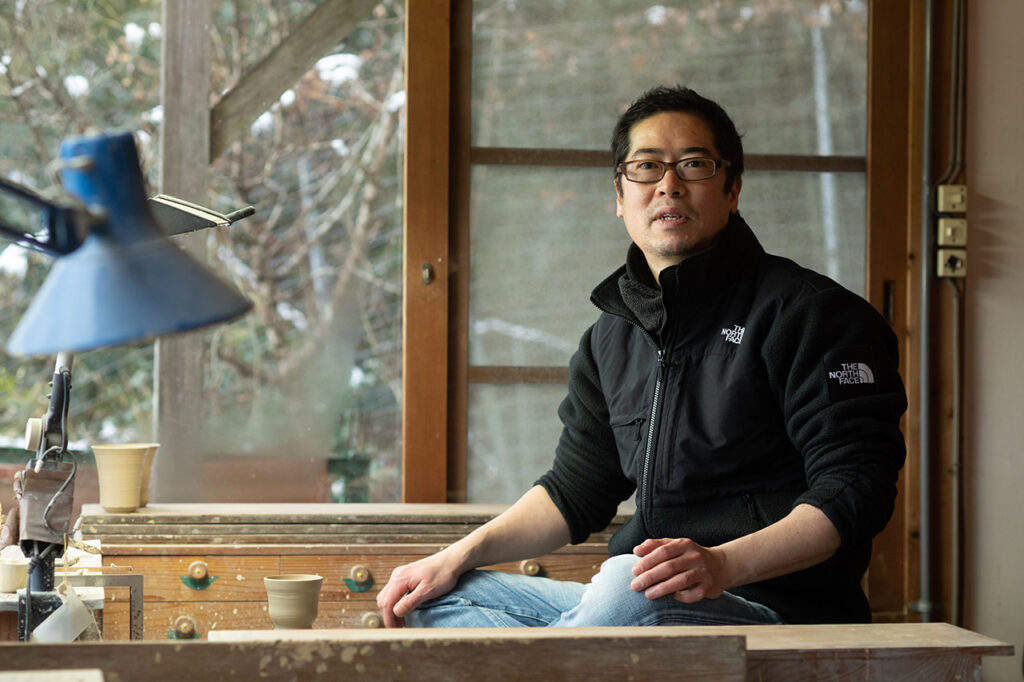

My father was one of the potters who moved from the Gojozaka area at the time and opened the Uoun Kiln here. I was familiar with ceramics from the time I was born, but I didn't set my sights on it from the beginning. After graduating from high school, I thought again how nice it is to make things, and I decided to become a potter," says Yamamoto.
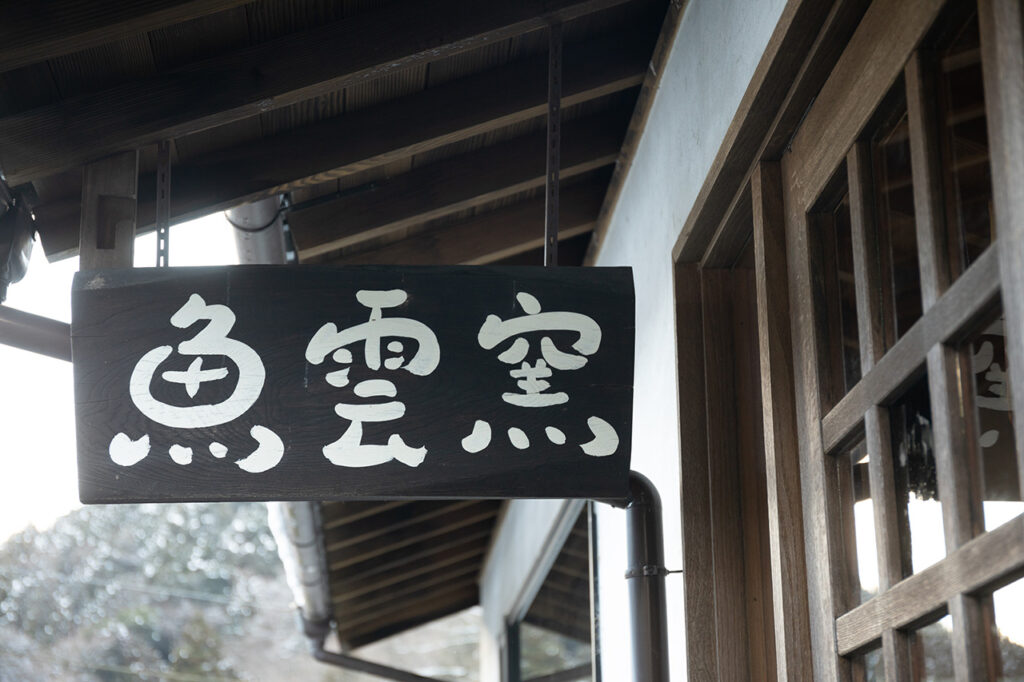

Although he works with his father, mother, and sister at the Uoun Kiln, their styles are different. The pottery is not passed down from parent to child, but rather, the free expression of the two is respected. Even so, he says, "My goal is to create daily tableware. I have been using my father's tableware every day, so I hope to make tableware that can be used casually and that will please people," he says, revealing a feeling that was born out of his father's work.
Yamamoto studied pottery shaping using a potter's wheel and glazing at a vocational school in Kyoto for one year each, and then spent two years training at the Yomitan Village pottery kiln in Okinawa.
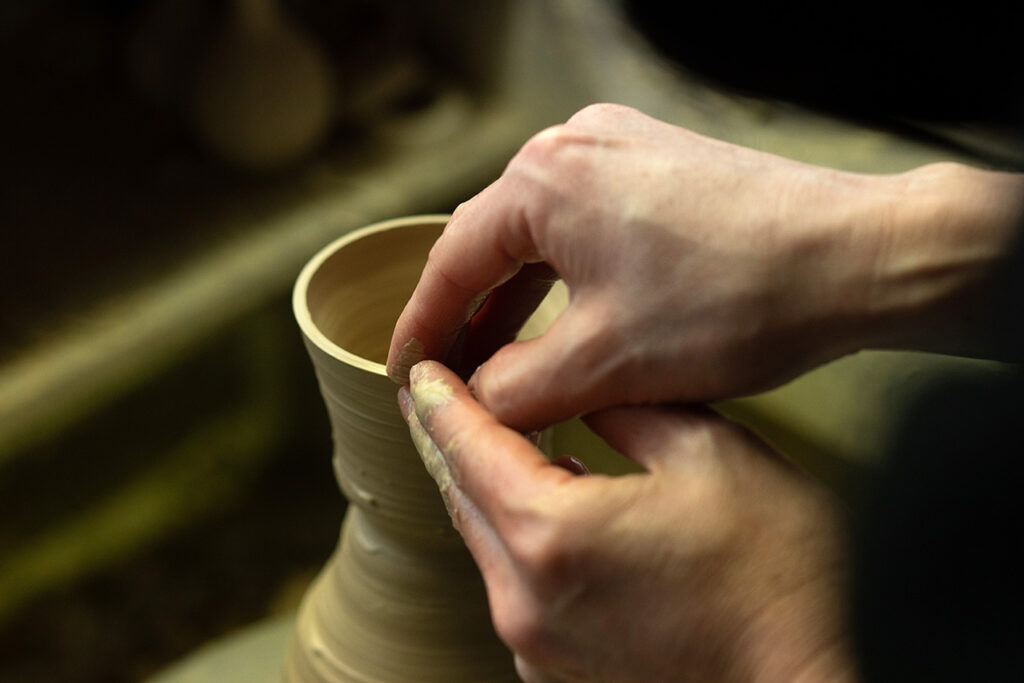

Both the Turkish blue color and the shinogi, which carves grooves into the surface of the fabric to create the ridged pattern, were greatly influenced by his experience in Okinawa. The Turkish blue was inspired by the beautiful colors of the sea and sky that impressed me in Okinawa. Shinogi is a technique used at the kiln where I trained. The shinogi pattern gives expression to the vessels and gives them a three-dimensional feel, which is very attractive," he says.
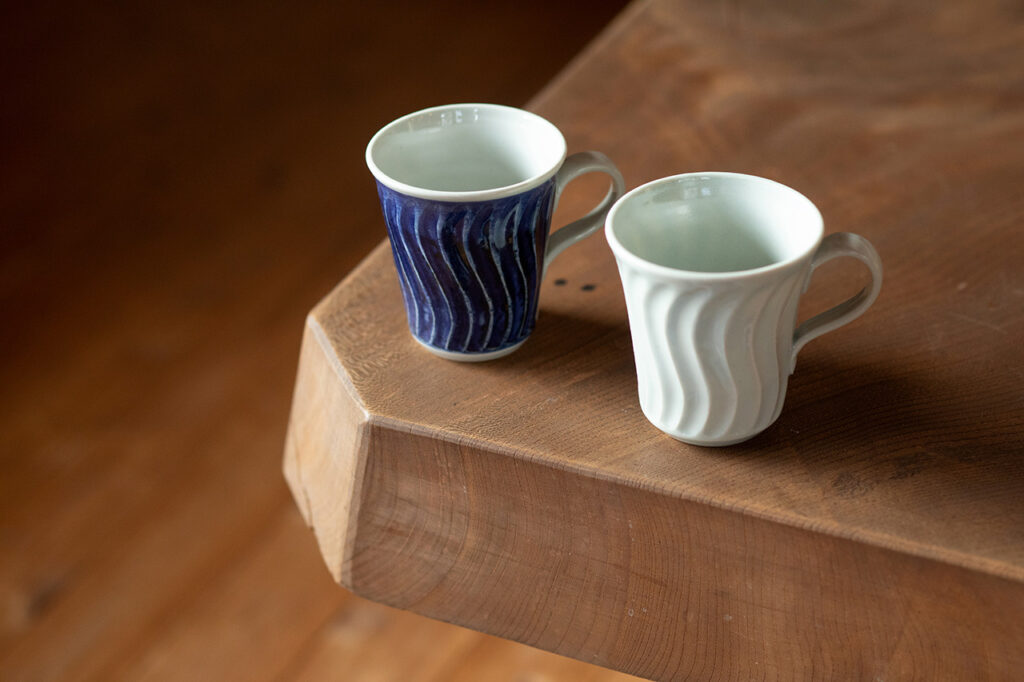
White porcelain shinogi mugs and Kuresu-maki shinogi mugs are 3,300 yen each. The form of the handle is easy to hold, lightweight, and easy to use. The undulating shinogi pattern gives a gentle impression.

Another feature of Yamamoto's work is that it is both ceramic and porcelain. It is rare for a single artist to work in both types of pottery and porcelain, which differ in clay and manufacturing process. He says, "Depending on the piece, I make the most of the qualities of both ceramic and porcelain. For example, the Turkish blue vase is a combination of Turkish glaze and red clay, and the texture unique to ceramics adds texture. Shinogi is a process of shaving the surface, so that even thin fabrics can be made from strong porcelain," he says.
This work was created in collaboration with a restaurant. It was a plate to put Japanese sweets on. I wanted them to enjoy the blank space, so I made it a little larger in size," said Yamamoto. A portion of the dish is unglazed to show the red clay of the base.
It is as if a picture is completed when a dish is placed on top. I would like to continue to try to create vessels with food on top.

Top right: Turkish glaze dish, 5,500 yen, accented with red clay showing on the top and bottom edges. It is perfect for use with Japanese sweets, cakes, and other sweets. Lower right: Turkish glaze soy sauce dishes (1,320 yen each) that you can't help but want to pick up. The matte coloring makes them blend in with the dining table without being too pretty. Left: White porcelain shinogi octagonal plates, 3,300 yen each. The shinogi pattern on the smooth white porcelain is simple yet delicately beautiful. It is sure to make your food look delicious.

In the future, he would like to try new challenges, such as digging his own clay for the potter's clay and firing in a wood-fired kiln. I will never waver in my belief that my vessels are only for use. I would be happy if people enjoy their meals with my vessels.
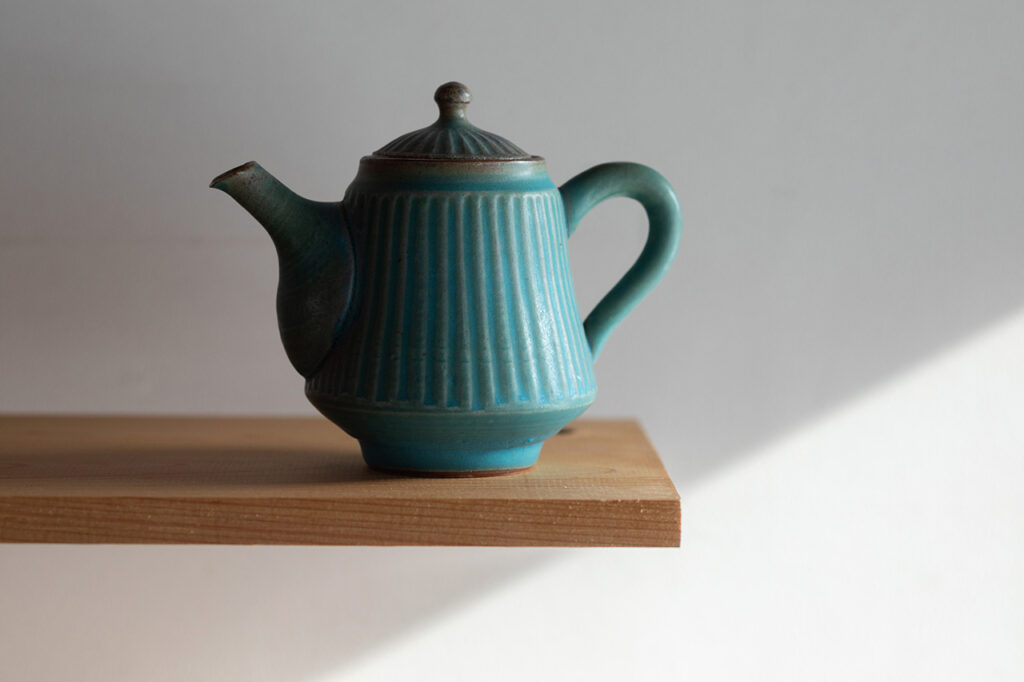
The Turkish glaze shinogi pot, priced at 11,000 yen, has a unique color tone created by the thickness of the Turkish glaze that changes in the grooves of the shinogi pattern.

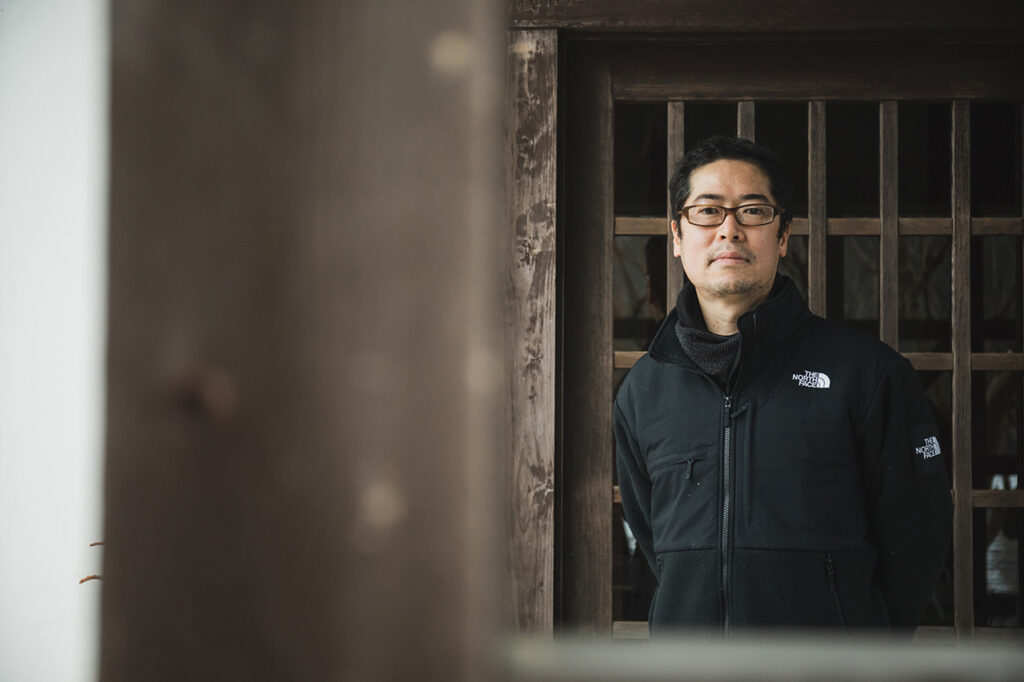
Taro Yamamoto was born in 1974 in Kyoto. After working at the Kyoto Prefectural College of Ceramic Technology and the ceramics course at the Kyoto Municipal Industrial Research Institute, he trained at the Yomitan Yakihoku Kiln in Yomitan Village, Okinawa.

This pottery was opened in 1969 by potter Shigeyuki Yamamoto in Sumiyama, Uji. The name comes from the fact that many of his works feature fish and other living creatures. The gallery attached to the studio displays not only Shigeyuki's works but also those of his family members. The difference in styles is interesting to see at a glance: his wife, Yoko, uses motifs of mountain flowers and grasses, his son, Taro, uses turquoise colors and shinogi techniques, and his daughter, Kaoru, uses tatara (a kind of bamboo lathe) and color painting.
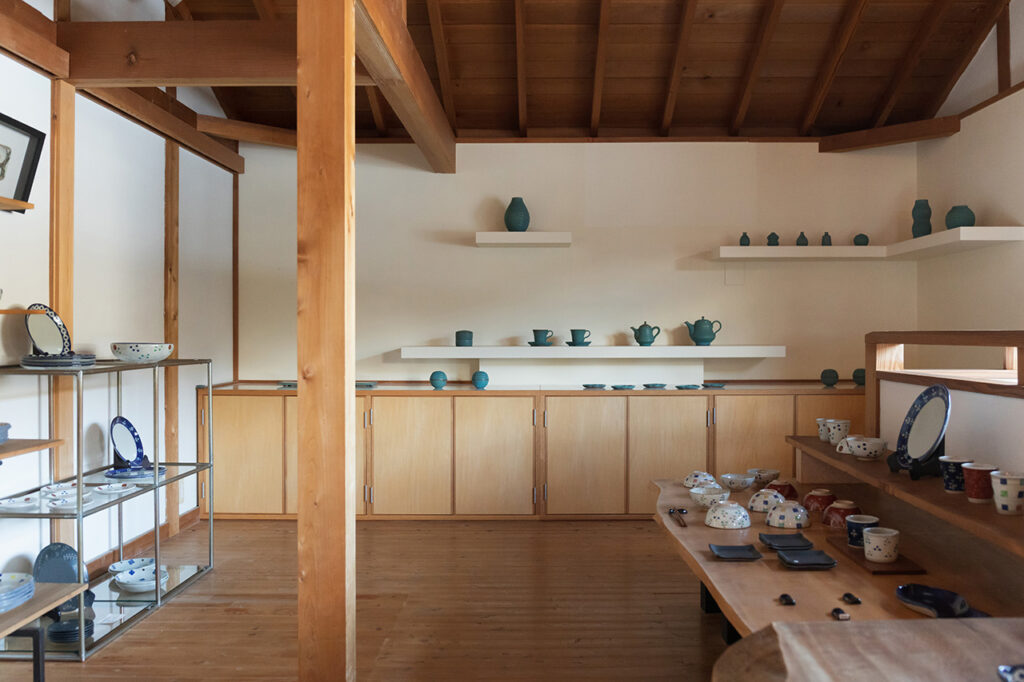

Over 600 interviews per year! An order site carefully selected by the editors who knows Kyoto and Shiga.
nowOfficial LINE friend registration500 yen OFF coupon is being issued!
Distributed every Friday morning at 8:00 am! From new restaurant information to event information that we want to share with you, We deliver articles about Kyoto that are useful to know. About 20,000 people have registered.Click here to add a friend!
 News
News Feature article
Feature article Featured event
Featured event